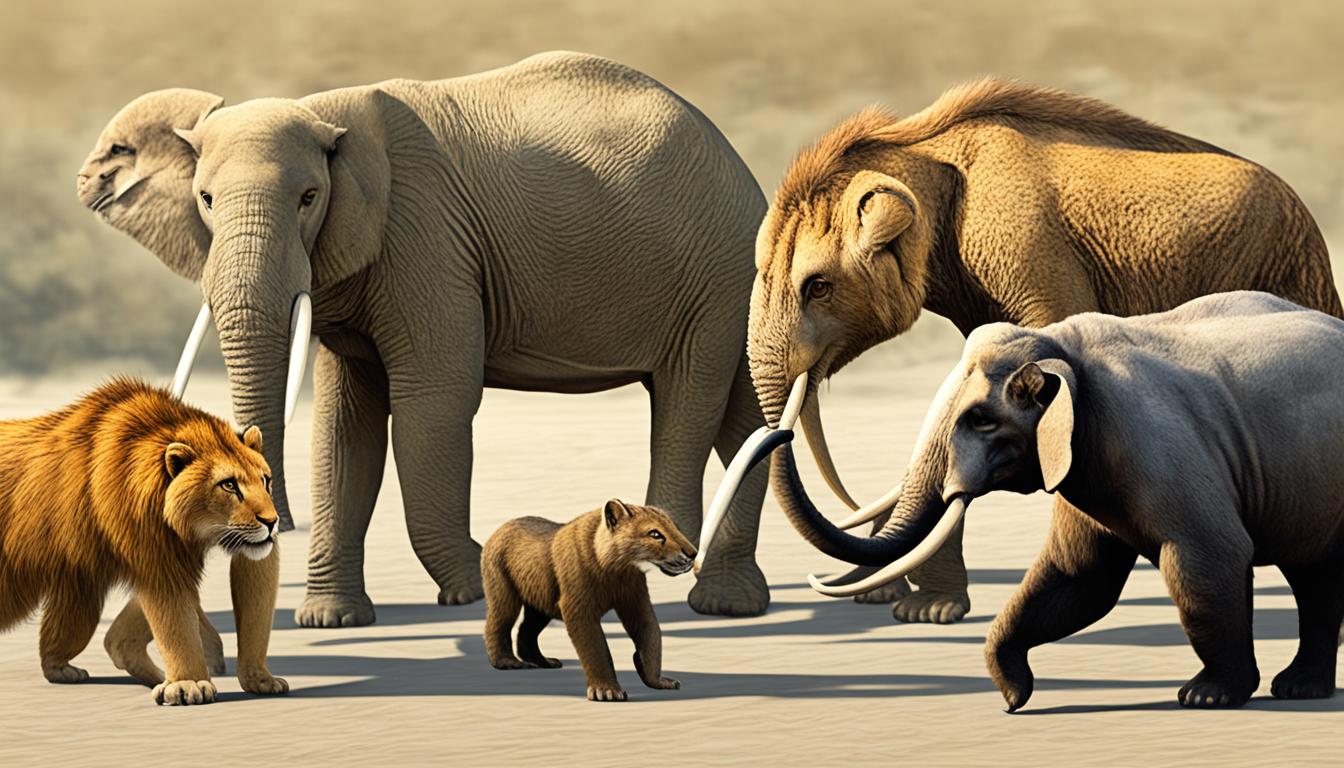Mammals Evolution
Get ready for a fascinating journey through mammal evolution. This group of animals has long amazed both scientists and lovers of nature. We will look at the newest findings in evolutionary biology. This includes what we’ve learned from finding fossils and looking at molecules. So, how did important changes and new species make today’s vast variety of mammals possible?
Learning about how mammals started and got so varied helps us see the big picture. From big creatures like the blue whale to tiny ones like the shrew, mammals thrive in many places. Their ability to adapt and survive is awe-inspiring.
Let’s dive into Mammals Evolution and Evolutionary Biology. We’ll learn about the start of mammals through Mammalian Origins. And we’ll see how Phylogenetic Analysis, Fossil Records, and Molecular Clocks tell their story. Discover how Adaptation Mechanisms and Speciation Processes shape Biogeography and Comparative Genomics.
Key Takeaways
- Explore the fascinating journey of mammalian evolution, from origins to diversification.
- Discover the latest advancements in evolutionary biology, including insights from fossil records and molecular analysis.
- Understand the key adaptations and speciation processes that have shaped the remarkable diversity of mammals.
- Gain a deeper appreciation for the evolutionary forces that have sculpted the world we inhabit.
- Delve into the power of phylogenetic analysis, fossil records, and molecular clocks in unraveling the mysteries of mammalian lineage.
Evolutionary Biology: Tracing the Lineage of Mammals
Let’s explore the world of Mammals Evolution. Understanding this field involves using various tools. These help biologists study the past and how mammals are related today. Phylogenetic Analysis is a key method. It lets us create evolutionary trees and see the link between different species.
Phylogenetic Analysis: Mapping the Evolutionary Tree
Scientists look at how different mammal species are alike and different. This helps them figure out where mammals came from. The method is called Phylogenetic Analysis. It shows how mammals have changed and adapted over time.
Fossil Records: Unlocking the Secrets of Ancient Life
Fossil Records are like a history book. They give us real proof of life long ago. By studying old mammal remains, we learn about their biology and how they lived. This information is key to understanding evolution.
Molecular Clocks: Timing the Divergence of Species
Molecular Clocks are a great way to find out when species split off from each other. They use genetic changes to tell time. This helps us see how life has changed over the ages. It’s all part of understanding mammals’ long journey.
By combining Phylogenetic Analysis with studying Fossil Records and using Molecular Clocks, biologists are painting a detailed picture. They are showing us how mammals have evolved over time. It’s a fascinating journey that explains the huge variety of mammals we see today.
Mammals Evolution: Key Adaptations and Speciation Processes
We are learning more about mammals and their evolution. It is cool to see how they have changed over time. They have become so different, living in places like deserts and rainforests. Mammals have found ways to survive and grow in all kinds of environments.
Adaptation Mechanisms: Evolutionary Responses to Environmental Challenges
Mammals have developed amazing ways to deal with their environment. For example, some have thick fur for the cold. Others have special stomachs to eat plants. These changes help mammals live in many places. Studying these changes can teach us how they became so successful.
Speciation Processes: How New Species Arise
The many kinds of mammals did not all come from small changes. New ones formed over time from old ones through speciation. They became different because of where they lived, how they bred, and their genes. Looking at where mammals live and their genes helps us understand their amazing story.







